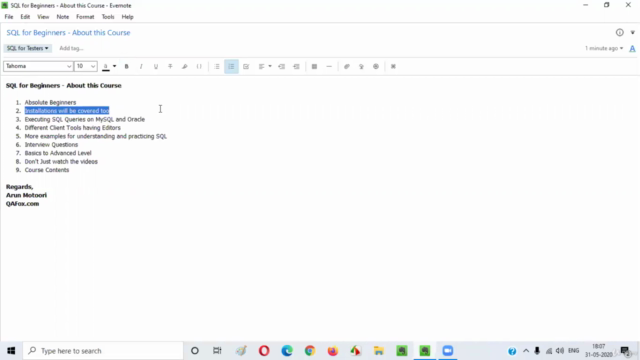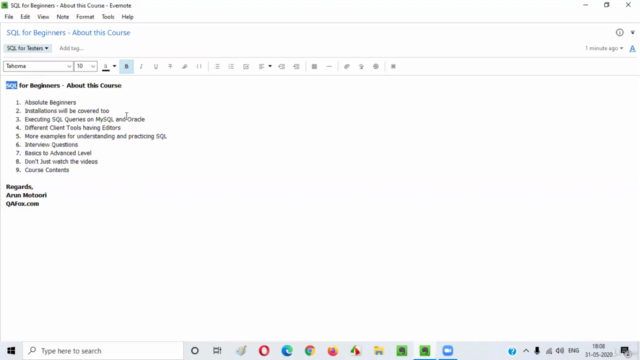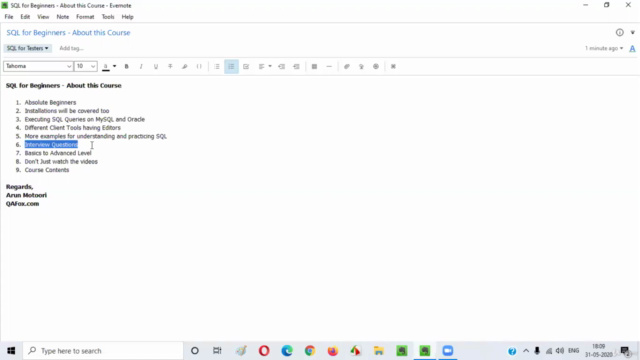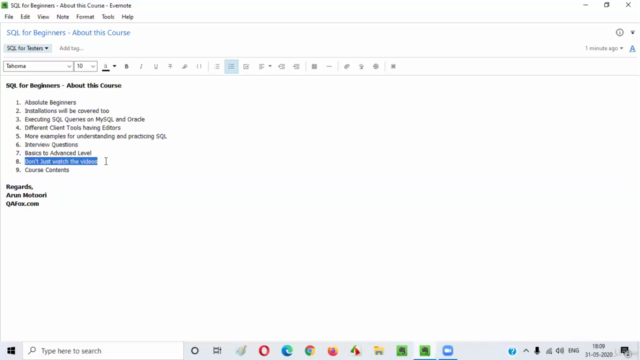SQL Made Easy for Beginners
Step by Step, Easy, In Detailed, Well Organized Videos along with Interview Questions (Includes MySQL and Oracle)
4.48 (41 reviews)

191
students
32 hours
content
Jun 2020
last update
$54.99
regular price
What you will learn
SQL from Basics to the Advanced Level
Learning SQL on both popular MySQL and Oracle RDBMS Software
Screenshots




Related Topics
3188724
udemy ID
5/31/2020
course created date
6/24/2020
course indexed date
Bot
course submited by